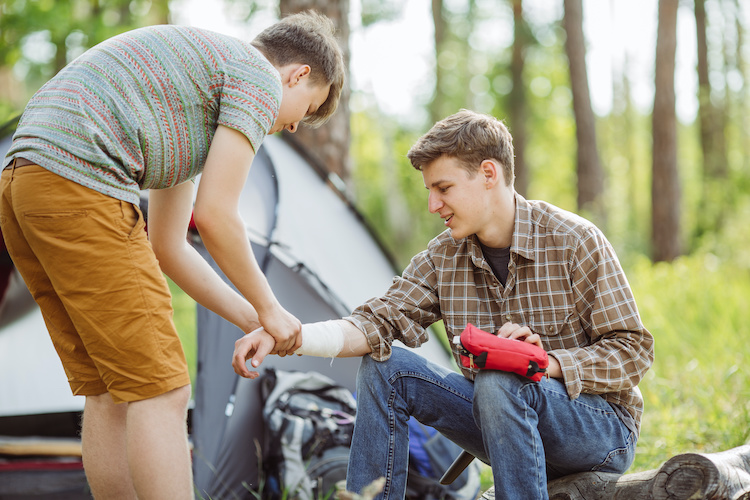What is remote first aid?
It refers to the provision of emergency medical care in environments that are distant from traditional medical facilities or where access to such facilities may be limited or delayed. These environments can include wilderness areas, remote worksites, offshore locations, and even urban settings during natural disasters where infrastructure may be compromised.
Why is it important?
Its importance cannot be overstated, particularly in a country as vast and geographically diverse as Australia. In remote areas, injuries and medical emergencies can occur, ranging from minor cuts and burns to more serious incidents such as fractures, snake bites, or heat-related illnesses. Prompt and effective first aid intervention can make the difference between life and death, prevent further injury or deterioration, and improve outcomes for the casualty.
What does remote first aid entail?
Remote first aid training goes beyond standard first aid courses to address the unique challenges of providing care in isolated environments. Some key components include:
1. Assessment and decision-making: Remote first aiders learn how to conduct thorough assessments of casualties and make informed decisions about the appropriate course of action given the resources and conditions available.
2. Treatment in remote environments: Training covers techniques for managing common injuries and medical conditions encountered in remote settings, as well as improvising medical equipment and supplies when necessary.
3. Environmental considerations: Remote first aiders are trained to recognise and manage environmental hazards such as extreme temperatures, inclement weather, or venomous creatures that may pose additional risks to casualties and rescuers.
4. Communication and evacuation: Effective communication and coordination are essential in remote first aid scenarios, including relaying vital information to emergency services and facilitating timely evacuation of casualties to definitive care.
Qualifications for remote first aiders in Australia
In Australia, individuals seeking to become remote first-aiders typically undergo training and certification through registered training organisations (RTOs) that offer courses specifically designed for remote environments. While requirements may vary depending on the specific course and context, qualifications often obtained are:
1.HLTAID013 – Provide first aid in remote or isolated site: This nationally recognised training course equips participants with the knowledge and skills to provide first aid in remote settings. It covers topics such as casualty assessment, managing trauma and environmental injuries, and coordinating emergency response and evacuation.
2. Wilderness First Aid or Remote Area First Aid: Some specialised courses focus specifically on providing first aid in wilderness or remote area settings, addressing the unique challenges and scenarios encountered in outdoor or isolated environments.
Who can administer remote first aid in Australia?
In Australia, anyone can administer first aid in an emergency, regardless of whether they hold formal qualifications. However, to ensure the highest standards of care and safety, organisations operating in remote areas often designate trained remote first aiders among their staff or volunteers. These individuals have undergone specialised training and possess the skills necessary to provide effective first aid in challenging environments.
In conclusion, remote first aid plays a vital role in ensuring the safety and well-being of individuals working or travelling in isolated areas across Australia. By equipping individuals with the necessary skills and knowledge to respond effectively to emergencies in remote settings, we can minimise risks, prevent complications, and potentially save lives in situations where timely medical assistance may be limited or unavailable.
Don’t forget to visit our Blog page for more articles on other interesting topics.
If you want to stay informed on remote first aid and related subjects, take a look at our first aid courses available here and if you’re looking for first aid equipment for your business or home, we have a great range you can shop online here.
